The jalapeno pepper can be used for lots of recipes to add a little spice to your dish. Using jalapenos in salsa is perfect for the ones that love the spiciness.
Or, if you are like my family, just eating them fresh. I really don’t know how they have any taste buds left, I can’t do that much hotness. Whichever way you like to eat them, you should grow your own.
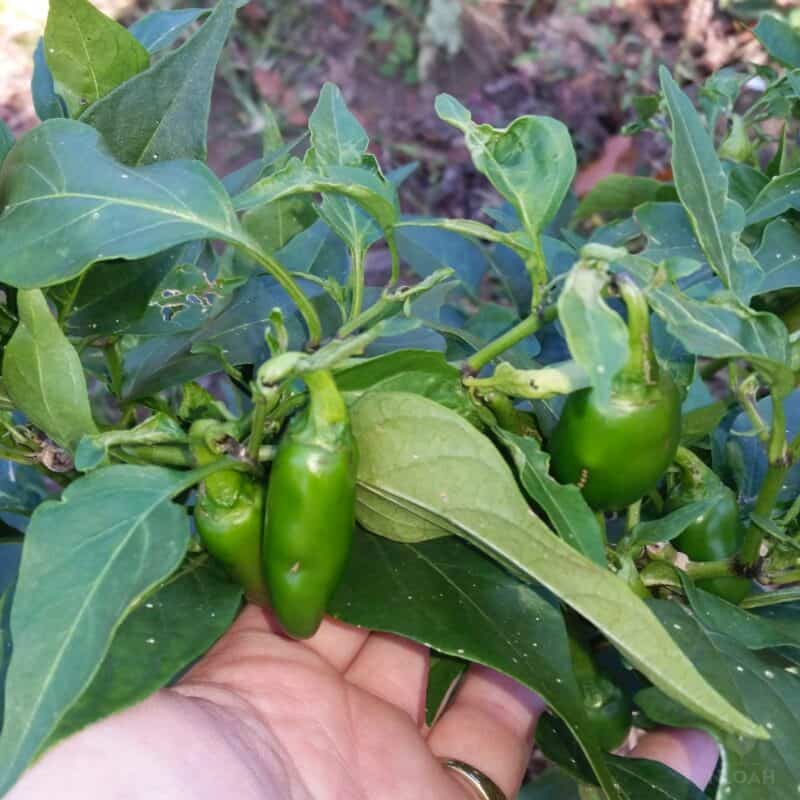
If you live in the colder areas the jalapeno pepper plant is an annual. If you live in the warmer climate zones, then the plant can be considered a perennial as it will produce all year round for a number of years.
Peppers are self fertile, therefore they do not need insects to pollinate them. Jalapenos are also good for you as they are full of Vitamin C.
Table of Contents:
Hotness Factor
The Jalapeno is a pepper is in the chilli pepper family. The chilli peppers are made up of several different hot peppers. The level of hotness a variety of pepper has is done by measuring of the Scoville scale.
The scale measures the concentration of the chemical compound capsaicin. Capsaicin and other similar compounds naturally occur in chilli peppers.
A pepper without capsaicin has a Scoville rating of zero. The hottest pepper currently, Pepper X, has a rating of 3.18 million Scoville units. The jalapeno has a Scoville rating of 2,500 to 10,000 units.
The pepper ranges in heat from mild to hot based on growing conditions. Due to the hot nature of these peppers it is highly recommended that you wear gloves when you are working with them, especially when chopping or removing seeds.
If you do not wear gloves then your hands will burn for hours after you are done, even after washing them several times. Then you will forget and rub your eye. Let’s just say: wear gloves!!
Jalapeno Varieties
The word jalapeno comes from Jalapa, the city in Mexico where the pepper originated. Jalapenos are a part of the chili pepper family. There are 21 different varieties of Jalapenos, but we will address some of the more likely ones.
- Early Jalapeno: Has a medium heat, and the taste is very comparable to a regular jalapeno. The early jalapeno does produce up to two weeks earlier than the other varieties.
- Black Jalapeno: This pepper was made to ripen to be as black as midnight. It produces very well, but the pepper is sweeter than most other jalapenos with a Scoville index of 2,000 to 2,500 units.
- Chichimeca: This pepper has a medium heat, but was bred to be disease resistant. This is a hybrid variety.
- Mucho Nacho: This has a heat level of 4,000 to 8,000 units and produces very fat peppers. It has a robust flavor that is not overpowered by the heat.
- Jalapa hybrid: Has a medium heat that can reach up to 10,000 Scoville units. This produces two to three inch long peppers that can be harvested a little earlier than most. Similar to the Early Jalapeno, but hotter.
There are ways to go about starting your own, from seed starting to purchasing plants. It is much cheaper to start jalapenos from seed, but I only recommend you do this if you have the time and the right atmosphere to grow in.
Purchasing is a sure fire way to know that you will have plants to grow in your garden, but this can be pricey depending on the size and number of plants that you buy. It is always best to try to buy plants that have not started to flower yet.
Step 1 Getting Started
Starting Jalapenos from Seed
You have two options when starting your jalapenos from seed. You can purchase seeds from just about any store, or you can save your own.
To start from seeds you need to be able to start them early enough that the plant has time to grow before you transplant it outdoors. It is recommended to start your jalapeno seeds about eight to twelve weeks before the last frost.
Fill your soil packs ¾ of the way full with soil, then add the seed. Lightly cover and water. Keep the seeds and the soil moist but not overwater them.
The seeds need a temperature of around 80 to 85 degrees Fahrenheit (26 to 29 C) to grow, and they need to be in a sunny location or under a growing lamp.
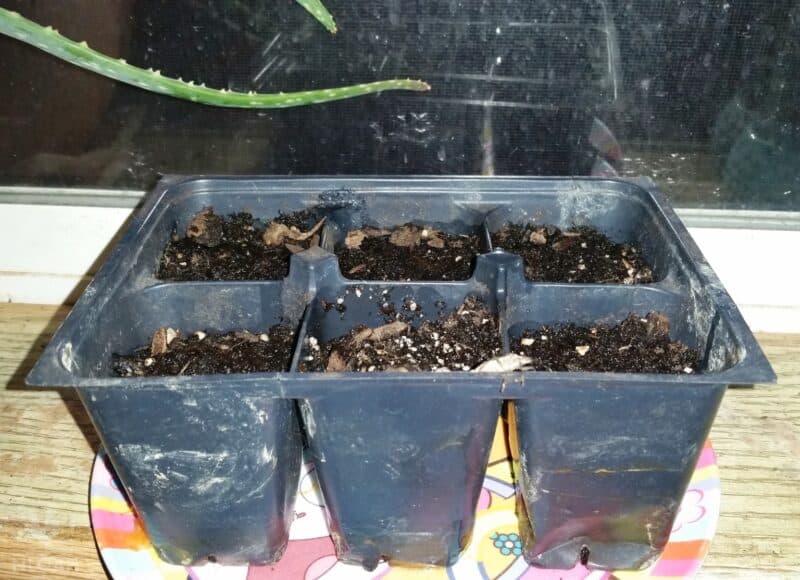
Purchased seeds
Seed packets can be gathered at any store, including dollar stores. They are relatively inexpensive. If you watch toward the end of the season you can even catch them on sale. There are organic seeds, heirloom varieties, non GMO, and hybrid seeds.
- The organic seeds are more pricey as they come from plants that are grown organically, and then processed and packaged certified organically.
- Heirloom seeds are seeds that have been saved and shared by generations of gardeners. They are considered a rare variety, and they are from the original plants that were grown.
- Non-GMO seeds are seeds that have not undergone any kind of genetic changes to create a different breed of seed.
- Hybrid seeds are considered genetically modified. They are a cross between two varieties. The seeds are generally sterile so that you can’t save them for the next season.
Follow the directions on the seed packet if planting from one. It will tell you how deep to sow the seed, how far apart to space the seeds and the rows, and how many days it takes the seeds to germinate (start to grow).
It also gives you a general idea of when the plants should be planted outdoors according to your zone.
Saved Seeds
Saving seeds is the method that I prefer. I feel like I have less waste if I save back my seeds for the next year. I originally started with a purchased pack of seeds and then start saving from there.
As I clean the vegetables, I go ahead and separate the seeds out, and dry them for the next year. A good thing about saving and using your own seeds you already know what the plant produces and how spicy it is.
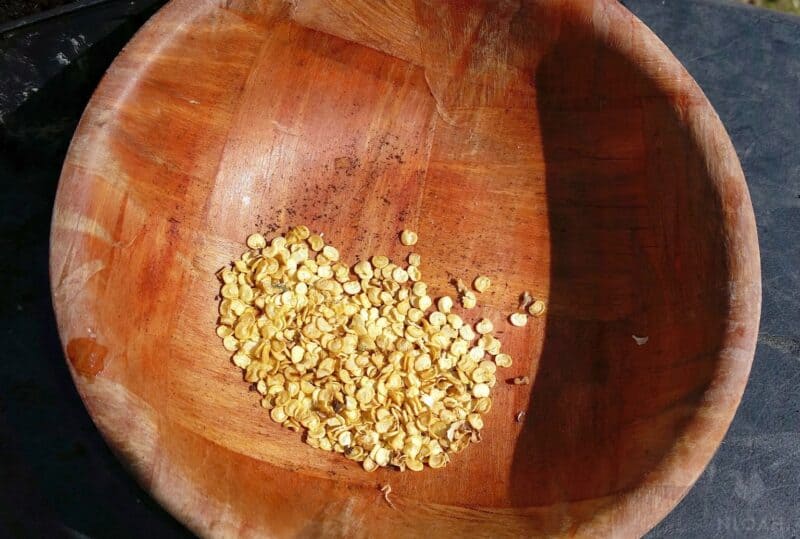
Either way you choose to start you seeds the plants will need to be hardened off outside. This means to adjust them to the outdoors slowly so as not to shock them from the temperature change.
Also, the jalapeno is slow to start, so you should not sow the seeds directly outdoors because you will not have enough time in your growing season to get full harvest from your plants.
I recommend that you keep a journal or a calendar of when you start your seeds so that you can refer to it the next year to know when you should get started. Record keeping is an important part of homesteading.
Starting With a Plant
You can purchase a plant that is ready to go. These are referred to as seedlings. Pick and choose the type of plant that you are looking for and the number of plants that you need for your space.
The great thing about purchasing plants is that they have already been hardened off to the outdoors, and therefore are ready for the ground.
Step 2 Spacing The Plants
The jalapeno pepper loves sun so they should be planted in direct sun. They also prefer a soil that is rich in nutrients so compost is good to add to the soil. Keep the soil wet, but be sure not to overwater as that can lead to rotting.
Once you have your garden ready to plant you will want to space the plants out to about 14 inches apart. The rows need to be about two feet apart for adequate spacing. You don’t need to be so worried that you measure between every plant and row.
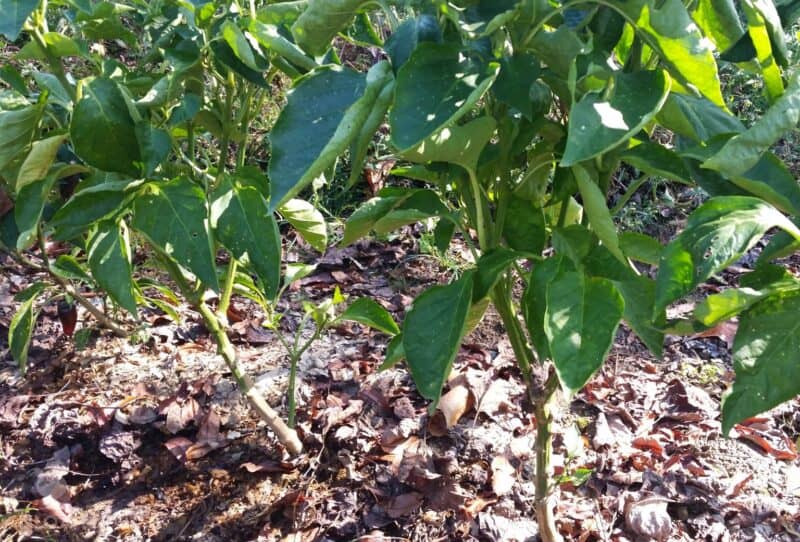
A good estimate should work fine, otherwise it may take you forever to get your garden in. A fully mature jalapeno plant can reach to be about three feet tall.
You don’t want to overcrowd your plants as this will prevent the sun from hitting all of the plant, and it could be difficult to thoroughly water.
Companion Plants
There are certain plants that grow better next to each other. Then there are plants that just do not grow well together at all. The companion plants for peppers are carrots, onions, basil, and parsley. The basil will help to deter flying insects from your plants.
Step 3 Transplanting
Dig a hole a little larger than the soil and plant pack. Bust up and loosen the soil inside the hole. I like to put a sprinkle of epsom salt in each hole before placing the plant.
The epsom salt is made of magnesium sulfate. Plants thrive when you add both those compounds to your soil so it is a simple organic additive. Gently remove the plant from its pack, and place it into the hole and cover with soil. Pat the soil down and then water.
Step 4 Weeding and Mulching
I prefer to mulch right after I get my peppers in the ground. If I don’t it tends to get away from me and then my garden is a mess. Just mulch between the plants well, and you should be fine as they grow. This way you are keeping the soil moist and hopefully wee free from the get go.
It is best to keep your plants weed free. If you allow weeds to take over they will take up so much of the nutrients that your plants won’t be able to thrive. A great idea is to mulch around your plant.
The mulch helps keep the weeds down, and helps to retain moisture for the plant. I have a rather weed productive garden so I put down some newspaper, and then mulch over that to help with weed control. For mulch you can use anything from straw to leaves to wood chips.
Step 5 Watering
Your pepper plants love water so you need to water every other day or so, especially on the really hot and dry days. It is a good idea to go ahead and feed your plants a good plant food. As I said mulch, will help keeping the soil moist for your plants.
Step 6 Harvest Time
Once the jalapeno plant has grown and flowered, you will start to get peppers. Every flower is where there will be a pepper. It generally takes three to four months for the plant to start producing. You will want to let the flowers grow so that they will bear fruit.
A fully sized jalapeno can be anywhere from three to six inches long. They are fatter at the top and firm to the touch. It will feel like they are “crunchy” when you check them. Most jalapenos are green in color, but if left on the plant they will turn black then to red in color. At any of these stages they are fine to eat.
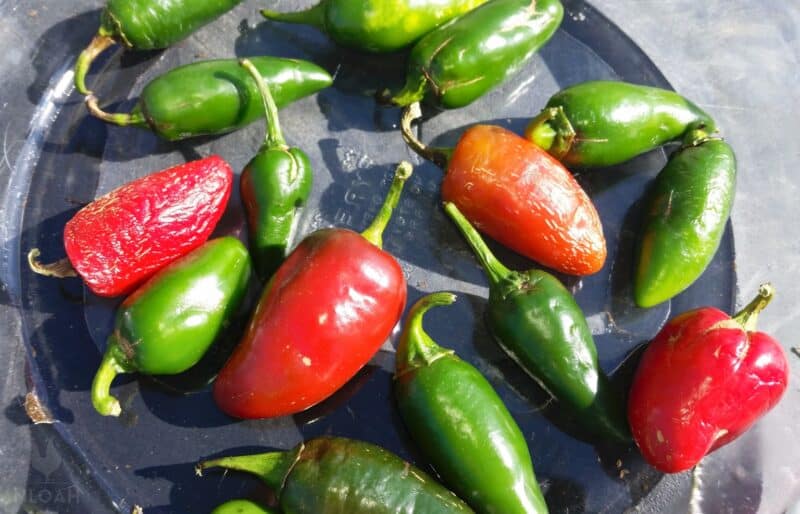
After harvest, the peppers may still turn color from green to red; this is perfectly normal and they are still fine to eat. It is best to cut the peppers from the plant with scissors so that you do not damage it.
After your harvest of fresh jalapenos, or even store bought, it is best to go ahead and wash your produce. Washing helps to remove any bacteria that may be on your peppers.
To wash, simply use one part distilled vinegar to three parts water, so ¼ cup vinegar to ¾ cup water would do the trick. Due to the pepper having a harder outer layer you can spray it with the mixed solution, and rinse it with plain water afterwards.
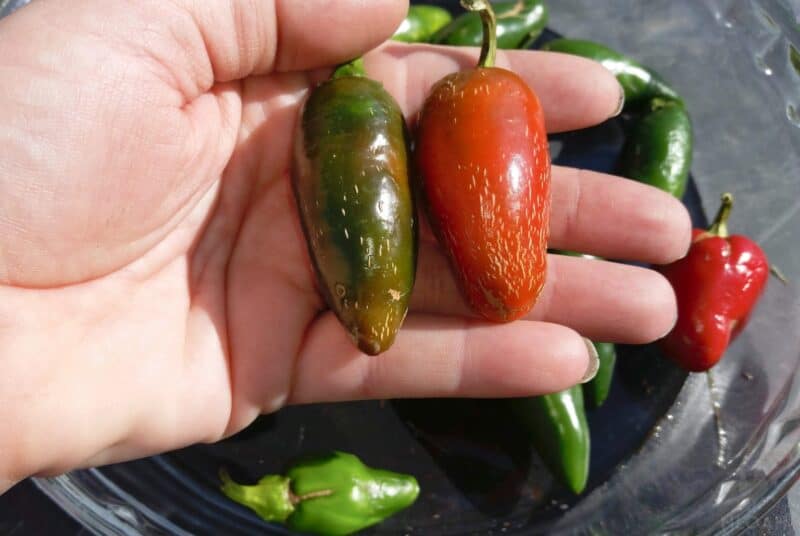
Stress lines occur on the older peppers, and depending on how much stress the plant has been under determines the amount of stress lines. The more lines, the hotter the pepper.
After some looking into this and some taste testing by my husband and daughter it was confirmed that these liney ones were hotter. Into the salsa those ones went!
At the end of the growing season the jalapeno plants will die with the frost. Simply clean them up with the rest of your garden and prepare the soil for the next year.
Diseases
Diseases can spread among your crops destroying your garden. There are some that there is no treatment for. The only thing you can do is pull up the plants and discard of them, not in your compost as that can just reset it for the next season.
Root rot, verticillium wilt, bacterial spot, and powdery mildew are some of the more common diseases. You can help protect your plants by not overwatering them.
Viruses
Certain viruses can attack your plants individually or in numbers. Insecticides rarely work to treat viruses. Some of the more deadly viruses that can attack your plants are the cucumber mosaic virus, potato virus, and pepper mottle virus.
There are some less deadly viruses that can also attack your jalapeno plants.
Pests
The plants that enjoy to snack on jalapenos can wreak havoc on the whole crop. The best way to protect them from pests is to simply pick them off as you see them.
You can also use a crop cover to protect the plants. The seedlings can be protected with a layer of mulch to keep anything from getting to the stem and roots.
Worms
There are several types of worms that like the jalapeno. There are cutworms which like to eat and cut the stem in half. The wireworm prefers to snack on the seedlings roots, and then bore into the stem.
The tomato fruitworm and the armyworm prefers to feed on the leaves, and the peppers themselves. You can pick the worms off as you see them, or you can use beneficial insects to eat the worms.
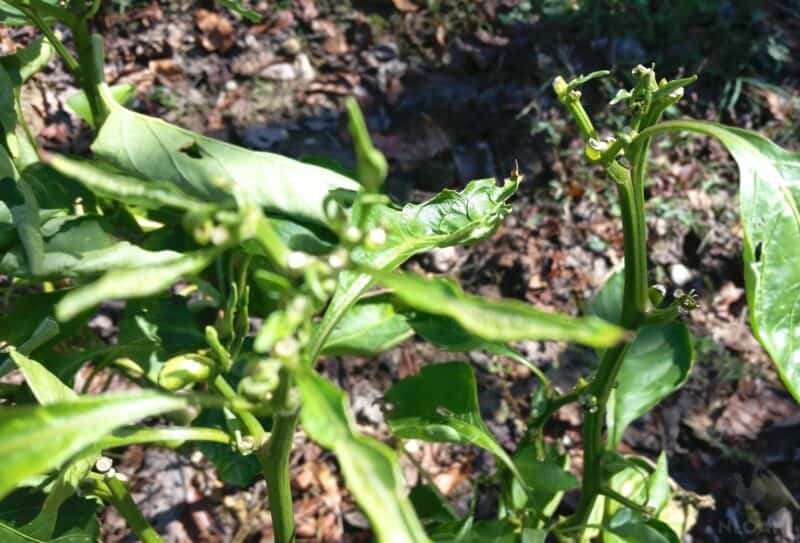
Beetles
The flea beetle is one that likes to feed on the young plant. They can eat away at the leaves of the seedling, and then it will fail to grow.
Aphids And Mites
The green aphid attacks the pepper plant while it is young, leaving it wilted. The aphid can also spread viruses among your plants. The mites feed on the peppers and on the leaves of the plant, leaving it deformed.
To treat the aphids and mites you can use an organic insecticide, such as neem oil. You can also dip the young plant in cold water to wash them off and kill them. Ladybugs also enjoy munching on aphids and mites.
Plant or Pepper Failure
If you feel like your plant isn’t up to par, or just isn’t producing well then you may want to consider a few factors. Water- are they staying to wet or are they to dry? Is the soil lacking in a much needed nutrient, this isn’t usually a problem as it should still grow as long as it meets the other issues.
Light- is your garden receiving adequate sunlight or is your indoor container plant not getting any light? Are there neighboring plants that may slow its growth down?
This is where the companions come from, go team carrots and onions. My peppers have also produced well being next to tomatoes. Also, be sure to check that there isn’t any mildew or rot going on that is under the mulch.
Indoor Container Growing
The jalapeno plant is an annual, meaning it is only good for that one year. Due to this and the fact that my family loves them I will grow a plant or two in pots in my window this winter.
I can start the peppers out in smaller containers and then transplant them to larger ones after they have grown to at least six inches and have a few true leaves. When transplanting to a larger pot be sure that it is at least a three gallon container. This is due to the size the plant will grow.
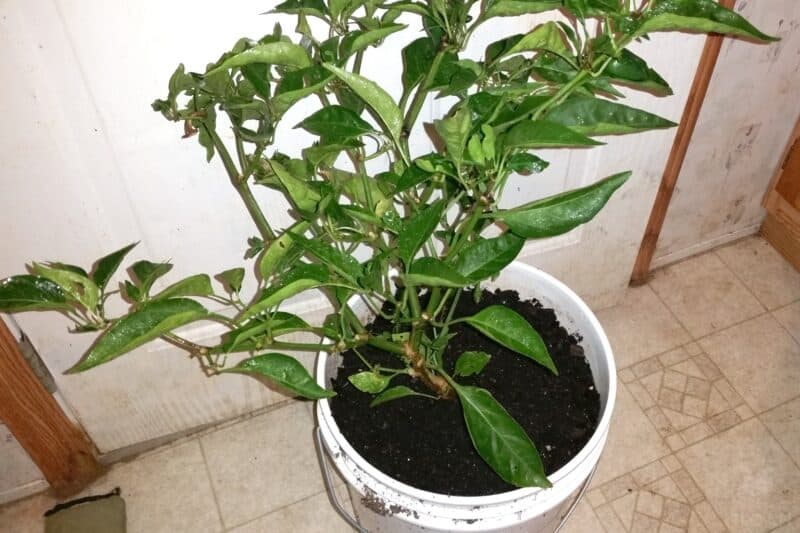
To container grow your peppers, you plant them the same as starting the seeds. You just plant the seed directly into the pot instead of individual packs. Once your pepper plant is up and growing you want to keep it indoors as it can not withstand the cold.
Be sure that your indoor pepper plants are still able to receive plenty of sunlight and water. They need the light to thrive and produce to their fullest potential.
Try to rotate the pot in the window every few days to ensure that the whole plant receives sunlight. Rotating it will also help keep the plant straight, otherwise it will bend to get into the sun.
It is very simple to grow jalapeno pepper plants, and they produce an abundance of peppers. I had six plants this year, and had so many that I was giving them away. My plants have been loaded with jalapenos all summer. They were the highest producing pepper in my garden this year.
Jalapeno Peppers FAQ
Plant jalapeno seeds 1/4 inch deep.
Under ideal conditions, a jalapeno plant will take around 3 – 4 months to grow from the day you start the seeds, until it’s ready for harvest.
You should leave around 14 inches of space.
Jalapeno peppers need 2 inches (2.5centimeters) of water / week.
Pick your jalapeno peppers when they’re dark green or dark red in color.
You’ll need a container that’s at least 4 gallons (15 liters) in volume.
Jalapenos turning black as part of the ripening process. There’s nothing to worry about.
Water your jalapenos twice a week and aim for 2 inches (2.5centimeters) of water / week.


Sarah Rodriguez is a homesteading wife and mother of five living in Appalachia. She grew up in a homesteading and logging family.
She and her husband Arnie work their 10-acre homestead together alongside their growing family. Sarah honed her self-reliance skills through 4-H and FFA at an early age and is now teaching her children to live off the land, raise livestock, and the importance of both sustainability and frugality.
